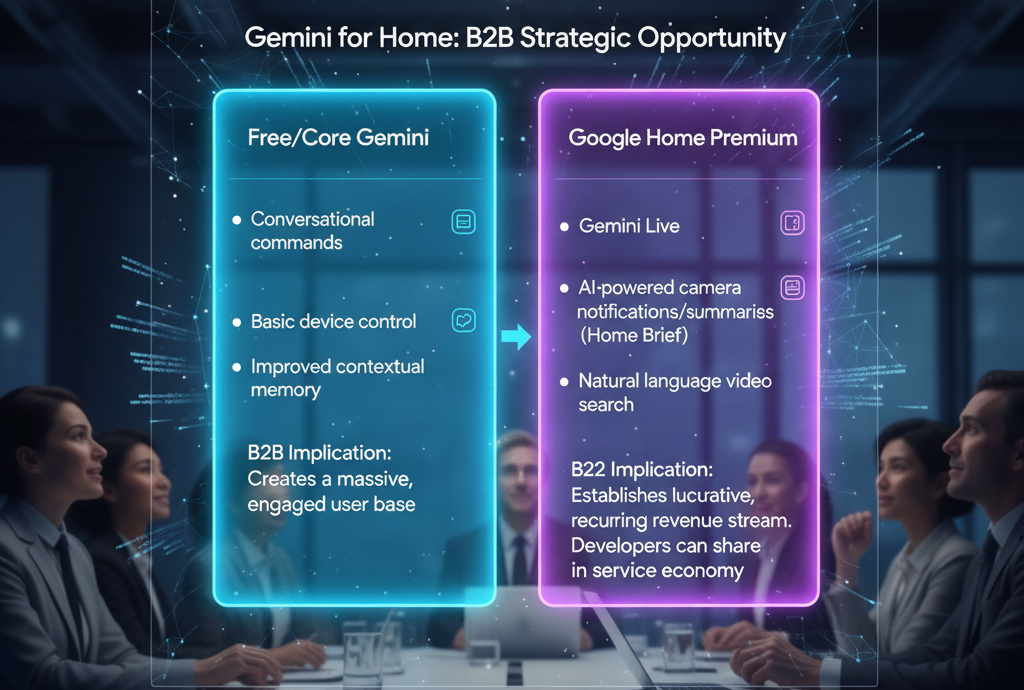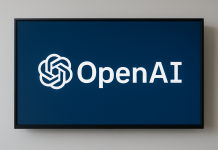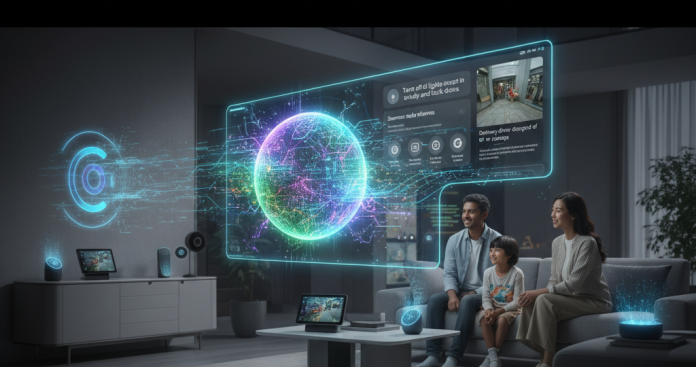It’s 6:30 PM. You’re a smart home device manufacturer, a retailer, or a B2B service provider in the smart ecosystem. You’ve successfully integrated with the Google Assistant platform. Now, answer this:
Which of the following commands would your current system fail to execute smoothly?
A. “Hey Google, turn on the living room light.”
B. “Hey Google, play my ‘Focus’ playlist on Spotify.”
C. “Hey Google, turn off all the lights except the office, and lock the front door.”
D. “Hey Google, based on the ingredients in my fridge, suggest a vegetarian 3-course meal and add what I’m missing to my shopping list.”
If you selected C or D (which, for most systems, is the correct answer), you’ve just highlighted the exact chasm Google’s Gemini for Home is designed to eliminate.
The Era of Transactional Commands is Over.
For years, the smart home has been defined by rigid, transactional commands. But with the launch of Gemini for Home, Google is not just updating an assistant; they are deploying their most capable, contextual, and conversational AI as the new foundation for the entire ecosystem.
This is more than a software upgrade. It is a foundational reset.
This shift fundamentally changes user expectations, demanding that your devices and services move from reacting to simple commands to participating in a natural, ongoing, and context-aware collaboration. From creating complex, exception-based automations with a single sentence to summarizing a day of camera activity with generative AI, the new smart home is an intelligent partner, not just a controlled device.
Ready to find out exactly how this seismic shift impacts your B2B strategy, from product development and API integration to retail shelf space and subscription models? Let’s dive into the four pillars of the Gemini for Home transformation and the concrete steps your business must take to thrive in the new era of ambient intelligence.
The Fundamental Leap: From Command-Based to Conversational AI
The single most important distinction between the departing Google Assistant and the incoming Gemini for Home is the fundamental model of interaction. The Google Assistant was, at its core, a command processor. It required specific syntax and often lost context with follow-up questions. Gemini, however, is built on Google’s most advanced Large Language Models (LLMs), enabling a truly conversational experience.
This shift delivers several crucial capabilities:
1. Contextual Persistence and Complex Reasoning
Instead of rigid commands, users can now engage in natural, flowing dialogue. For example, a user can say, “Hey Google, turn off the lights in the kitchen and dim the living room to 25%.” Gemini executes both tasks while simultaneously remembering the context. If the user then follows up with, “Now, what’s a quick recipe using the ingredients I have?” it can intelligently connect to a previously mentioned shopping list or even interpret ingredients mentioned earlier in the conversation. This multi-step, contextual reasoning dramatically lowers the friction of smart home interaction, encouraging increased daily usage.
2. Multimodal Intelligence Beyond Voice
Gemini for Home transcends simple voice commands by deeply integrating visual and sensor data. The AI isn’t limited to what you say; it interprets what the connected devices see and sense.
- Smarter Security: New Nest Cams and Doorbells, powered by Gemini, move beyond generic “person detected” alerts. They can now generate detailed notifications, such as, “Delivery driver dropped a package at 2:05 PM,” or “The dog jumped the fence.” This intelligent summarisation transforms raw video data into actionable, language-based insights, significantly enhancing the value proposition for security device manufacturers and monitoring services.
- Home Brief: This new feature provides users with an AI-generated daily summary, turning hours of security footage and thousands of sensor events into a quick, digestible recap of key household activities. This is invaluable for busy professionals and property managers.
The B2B Pivot: Platform Opportunity and Monetisation
For B2B players, the introduction of Gemini for Home is a platform expansion, not just a product launch. Google is solidifying its ecosystem to drive revenue, creating a clear framework for third-party integration and development.
A. The Google Home Premium Subscription Model
Google is strategically bundling many of Gemini’s most advanced features, such as “Gemini Live” (for expert, continuous troubleshooting and personalised advice) and the superior AI-powered camera features, behind the new Google Home Premium subscription. This move is pivotal:

This subscription-led model de-risks hardware sales by shifting the long-term value to a service-based relationship. Device manufacturers and retailers should view the hardware as an on-ramp to the high-value subscription, rather than the final product.
B. The Developer Ecosystem and Matter Standard
Google’s long-term strategy involves making Gemini for Home the unifying intelligence layer across the entire smart home landscape. By leveraging the Matter interoperability standard, Google actively encourages third-party manufacturers, from lighting to HVAC systems, to integrate their products seamlessly.
- New API Access: Google has promised expanded Home APIs that allow developers to build the “next generation of AI cameras and devices” around Gemini’s capabilities. This is a direct call to action for hardware manufacturers to move their R&D focus toward Gemini integration.
- Simplified Automations: The “Ask Home” feature allows users to create complex automations using natural language (“Later tonight, when everyone leaves, set the alarm and turn off the basement lights”). Device makers who ensure their products flawlessly support these nuanced commands will gain a significant competitive edge and see higher adoption rates.
Strategic Considerations for Indian and Foreign Clients
The launch of Gemini for Home presents distinct opportunities for businesses targeting the dynamic Indian and global markets.
1. For Smart Device Manufacturers & Integrators
The key to success is moving beyond simple connectivity to AI-driven functionality. Your new marketing narrative shouldn’t be about “Wi-Fi enabled lights,” but about “Gemini-ready lighting systems that respond conversationally.”
- Focus on Differentiation: Prioritise features that directly leverage Gemini’s conversational memory. Think sophisticated energy management routines or multi-lingual household support, a crucial factor for diverse Indian households.
- Testing and Reliability: Google is explicitly pushing its developer ecosystem to robustly test existing Works with Google Home integrations. Any business that fails to ensure a seamless experience with the new Gemini environment risks high churn and negative reviews. Reliability under the new conversational paradigm is paramount.
2. For Real Estate and Hospitality Tech
The complexity of managing multiple devices in commercial or rental properties is simplified by a central, intelligent brain.
- Property Management: Gemini for Home can become the central operational hub in short-term rentals or serviced apartments. Imagine tenants asking, “Can you generate a summary of all door activity while I was out?” or “Start the evening routine for the whole apartment.” This provides both convenience for the tenant and valuable data/security for the owner.
- IoT for Enterprise: This AI-powered home hub is a precursor to a smarter office. B2B software companies should immediately investigate how to integrate their existing platforms (CRM, scheduling, inventory) with the emerging Gemini ecosystem to enable conversational, hands-free management in a commercial setting.
Conclusion
The replacement of Google Assistant with Gemini for Home is Google’s clear message: the future of ambient computing is conversational, contextual, and deeply embedded in our daily lives.
For B2B decision-makers, this is more than just a consumer tech update; it’s a structural realignment of a trillion-dollar ecosystem. Businesses that act decisively now to invest in Gemini integration, align their hardware R&D with AI-centric features, and strategically position themselves within Google’s new subscription economy will capture the next wave of smart technology market share. The opportunity is clear: shift your focus from simply connecting devices to infusing them with superior intelligence. The time for the passive smart home is over; the age of Gemini for Home, the conversational, contextual, and intelligent home, is here.











